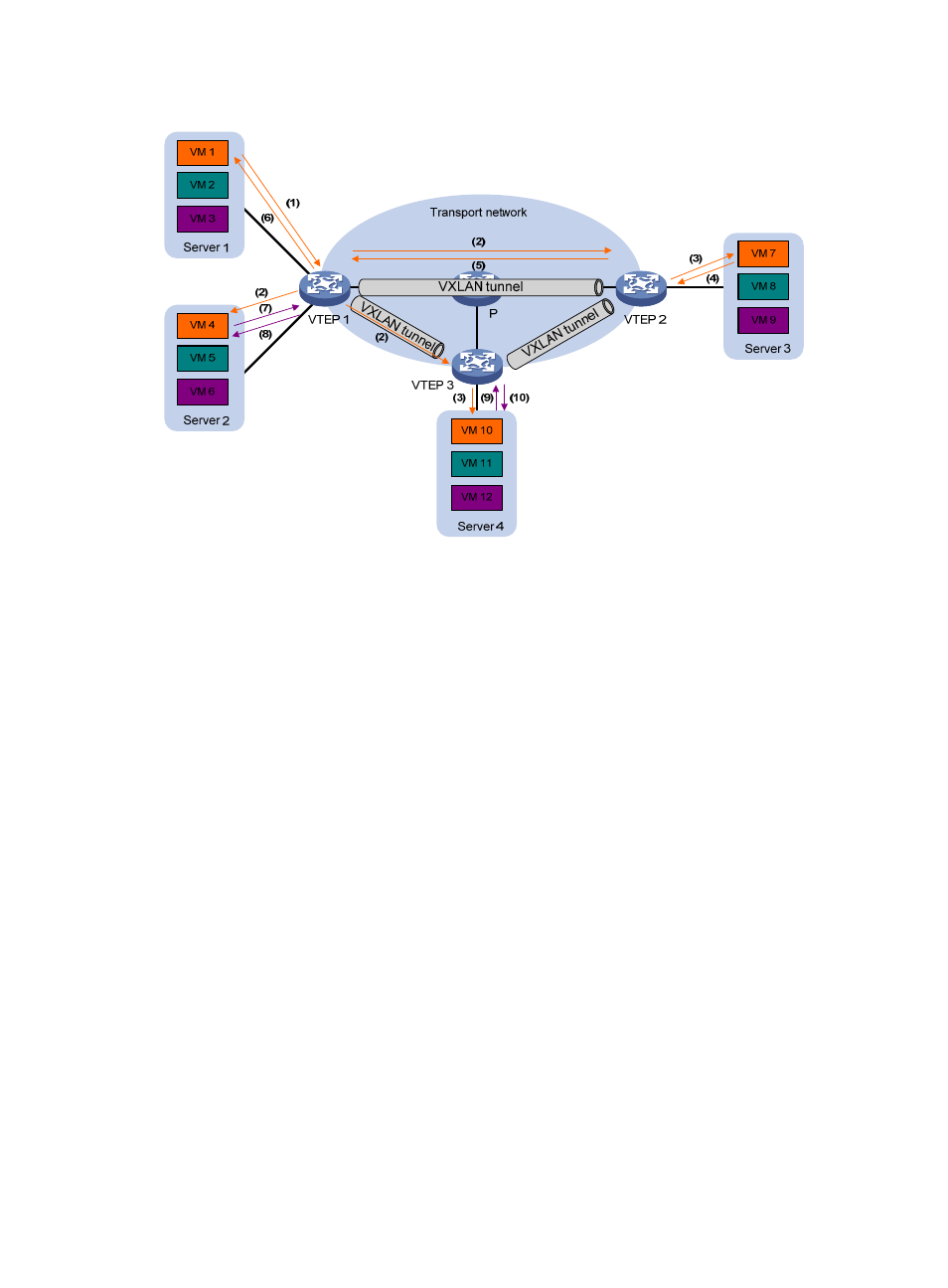Vxlan ip gateways, Protocols and standards – H3C Technologies H3C S12500-X Series Switches User Manual
Page 15

8
Figure 7 ARP flood suppression
ARP flood suppression uses the following workflow:
1.
VM 1 sends an ARP request to obtain the MAC address of VM 7.
2.
VTEP 1 creates a suppression entry for VM 1, and floods the ARP request in the VXLAN.
3.
VTEP 2 and VTEP 3 de-encapsulate the ARP request. The VTEPs create a suppression entry for VM
1, and broadcast the request in the local site.
4.
VM 7 sends an ARP reply.
5.
VTEP 2 creates a suppression entry for VM 7 and forwards the ARP reply to VTEP 1.
6.
VTEP 1 de-encapsulates the ARP reply, creates a suppression entry for VM 7, and forwards the ARP
reply to VM 1.
7.
VM 4 sends an ARP request to obtain the MAC address of VM 1 or VM 7.
8.
VTEP 1 creates a suppression entry for VM 4 and replies to the ARP request.
9.
VM 10 sends an ARP request to obtain the MAC address of VM 1.
10.
VTEP 3 creates a suppression entry for VM 10 and replies to the ARP request.
VXLAN IP gateways
A VXLAN IP gateway provides Layer 3 forwarding services for VMs in VXLANs. A VXLAN IP gateway
can be an independent device or be collocated with a VTEP. For more information about VXLAN IP
gateway placement, see "
Protocols and standards
IETF draft, draft-mahalingam-dutt-dcops-vxlan-04
